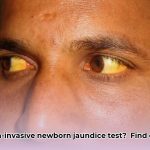Newborn jaundice is common, but early detection is key to prevent rare but serious brain damage. This guide provides a comprehensive overview of neonatal jaundice screening and management, covering risk assessment, testing methods, treatment options, and follow-up care. The goal is to equip healthcare professionals with the knowledge and confidence to protect newborns from potential complications. For more on TcB scans, see these guidelines.
Neonatal Jaundice Screening Protocol: A Practical Guide to Preventing Kernicterus and Neurological Damage
Jaundice in newborns, characterized by a yellowish tinge in the skin and eyes, is prevalent. While often harmless, elevated bilirubin levels can lead to severe issues like kernicterus, causing long-term neurological damage. Implementing a robust screening protocol is essential for early detection and management. This guide walks you through the critical steps to ensure effective handling of neonatal jaundice. Learn to administer bilirubin level tests with precision.
Risk Assessment: Identifying High-Risk Infants and Preventing Bilirubin-Induced Neurotoxicity
Identifying infants at higher risk for developing high bilirubin levels is vital for preventative care. Early identification enables proactive measures to protect these vulnerable newborns. Several factors contribute to this increased risk.
- Gestational Age: Premature infants (born before 37 weeks of gestation) are at higher risk due to immature liver function.
- Family History: Infants with a family history of jaundice, particularly siblings who required phototherapy, have a greater chance of developing the condition.
- Blood Type Incompatibilities: Blood type incompatibilities (such as Rh or ABO incompatibility) between the mother and baby can lead to increased red blood cell breakdown and higher bilirubin levels.
- Bruising: Significant bruising during birth can increase bilirubin production as the body breaks down the blood from the bruises.
- Exclusive Breastfeeding with Suboptimal Intake: Infants who are exclusively breastfed and not receiving adequate milk intake are at higher risk.
- Genetic Ancestry: Family history or genetic ancestry suggesting inherited red blood cell disorders, including Glucose-6-Phosphate Dehydrogenase (G6PD) deficiency, should raise suspicion.
- Macrosomia: Macrosomic infants of diabetic mothers
It’s critical to differentiate between elevated bilirubin levels and the actual risk of kernicterus. While high bilirubin necessitates intervention, it doesn’t automatically equate to brain damage. However, specific factors significantly increase this risk and must be carefully considered. These include:
- Isoimmune Hemolytic Disease: Conditions where the mother’s antibodies attack the baby’s red blood cells.
- G6PD Deficiency: This genetic condition makes red blood cells more susceptible to breakdown.
- Sepsis: Infection in the newborn can significantly increase the risk of kernicterus.
- Acidosis: An abnormally acidic state of the blood can impair bilirubin metabolism.
- Asphyxia: Lack of oxygen at birth can increase the risk of brain damage from bilirubin.
- Hypoalbuminemia: Low levels of albumin in the blood reduce the amount of bilirubin that can be bound and transported, increasing the risk of it entering the brain. An albumin level less than 3.0 g/dL is concerning.
- Lethargy: Significant lethargy or temperature instability.
Implementing the Neonatal Jaundice Screening Protocol: A Step-by-Step Plan for Efficient Management
An effective jaundice screening protocol ensures both speed and accuracy. Here’s a detailed breakdown of the process:
Step 1: Initial Assessment
- Evaluate the newborn’s overall health and note any relevant risk factors mentioned earlier. This includes reviewing the mother’s blood type, Rh status, and antibody screen results, as well as the infant’s blood type and direct Coombs test (DAT) result.
- The timing of the initial bilirubin assessment is crucial. Healthy, full-term babies usually undergo their first check around 24 hours post-birth. Premature or high-risk infants need more frequent checks, potentially multiple times within the first 24 hours. Hospitals should have a clear policy defining the timing of bilirubin screening based on risk factors. A visual jaundice assessment should be performed every 8-12 hours after delivery.
Step 2: Bilirubin Level Measurement
- Two primary methods exist for measuring bilirubin: Transcutaneous Bilirubin (TcB) and Total Serum Bilirubin (TSB). TcB employs a device to measure bilirubin levels through the skin, offering a quick and non-invasive approach. TSB involves a blood test, providing a more precise reading. TcB measurements should be interpreted with caution, especially in preterm infants and infants with darker skin pigmentation, as they may be less accurate. The selection depends on your hospital’s protocol and the baby’s specific needs, with some scenarios utilizing both methods. If the TcB is close to the phototherapy threshold (within 3 mg/dL), a TSB should be obtained for confirmation. A TSB should also be obtained if the TcB is greater than 15 mg/dL.
Step 3: Interpretation of Results
- Compare bilirubin levels with established nomograms (charts), considering the baby’s age (in hours) and gestational age. These nomograms guide decisions regarding further monitoring or treatment. The American Academy of Pediatrics (AAP) provides nomograms for assessing risk. Interpreting these results accurately requires expertise and experience. Consistent use of nomograms can improve accuracy. Nomograms help determine whether the bilirubin level is low, intermediate, or high risk for the infant’s age.
Step 4: Actionable Steps
- If bilirubin levels are elevated, immediate intervention is required. Follow your hospital’s specific protocols, often involving phototherapy – a light therapy aiding bilirubin breakdown. The intensity and duration of phototherapy depend on jaundice severity and other risk factors. Additional interventions may include intravenous fluids if the infant is dehydrated, or, in rare instances, blood transfusions (exchange transfusions) for severe cases unresponsive to phototherapy. If the TSB is rising rapidly (more than 0.5 mg/dL per hour), or is approaching the exchange transfusion threshold (within 2 mg/dL), consult neonatology immediately.
Step 5: Continuous Monitoring and Follow-Up
- Regular monitoring is paramount, particularly for babies undergoing treatment. Track treatment effectiveness and adjust as needed. Bilirubin levels should be checked every 4-6 hours while on phototherapy. Detailed record-keeping helps optimize future approaches. Monitor TSB after Discontinuing Phototherapy. Recheck bilirubin levels 12-24 hours after discontinuing phototherapy to monitor for rebound hyperbilirubinemia.
Management Strategies: Tailored Treatment Options and Key Considerations for Neonatal Care
Phototherapy, a standard treatment for elevated bilirubin, involves exposing the baby to special lights that help break down bilirubin. The duration depends on bilirubin levels and the baby’s response. The AAP guidelines provide specific thresholds for initiating phototherapy based on gestational age and risk factors.
Breastfeeding-related jaundice requires careful distinction between two scenarios:
- Suboptimal Intake (Breastfeeding Jaundice): Insufficient breast milk intake leads to higher bilirubin due to decreased stool frequency and increased enterohepatic circulation of bilirubin. Increasing feeding frequency (at least 8-12 times per day) and ensuring proper latch are typically sufficient. Supplementation with formula may be considered if adequate milk intake cannot be established.
- Breast Milk Jaundice: Bilirubin levels rise despite adequate feeding. It usually resolves without intervention but necessitates close monitoring. Breast milk jaundice typically peaks around 2 weeks of age and can persist for several weeks. It is thought to be caused by factors in breast milk that inhibit bilirubin metabolism.
Both scenarios require tailored approaches, underscoring the importance of detailed assessment.
Special Circumstances: Customizing the Therapeutic Approach
Conditions like G6PD deficiency (an enzyme deficiency affecting red blood cells) and isoimmune hemolytic disease (where maternal antibodies attack the baby’s red blood cells) significantly increase the risk of severe jaundice. Such infants require more aggressive management and close monitoring. Management of such conditions often requires specialized treatments, including:
- G6PD Deficiency: Screening for G6PD deficiency should be considered, especially in infants with a family history or belonging to high-risk ethnic groups. These infants may require more intensive phototherapy and, in some cases, exchange transfusion.
- Isoimmune Hemolytic Disease: These infants may require intravenous immunoglobulin (IVIG) to reduce the breakdown of red blood cells. Exchange transfusion may also be necessary.
Post-Discharge Care: Ensuring Continued Monitoring After Hospitalization
After discharge, ongoing monitoring is necessary to prevent unexpected worsening of jaundice. Before discharge, schedule a follow-up appointment with a pediatrician or other healthcare provider within 24-48 hours.
Monitoring practices vary, with some advocating for regular bilirubin checks and others relying on parental observation and scheduled check-ups. Comprehensive parental education is crucial, ensuring they recognize warning signs and know when to seek medical attention. Parents should be educated about:
- Jaundice Progression: How to recognize the signs of worsening jaundice.
- Feeding: The importance of frequent and effective feeding.
- When to Seek Medical Attention: Specific signs and symptoms that warrant immediate medical evaluation, such as lethargy, poor feeding, high-pitched cry, and fever.
Parental involvement increases the success rate of post-discharge care.
Optimizing Your Neonatal Jaundice Screening Protocol: A Comprehensive Summary and Prevention Planning
A robust neonatal jaundice screening protocol combines risk assessment, precise bilirubin measurement, timely intervention, and continuous monitoring. This collaborative effort
- Water Wheel Electric Generator Provides Free Home Electricity - December 15, 2025
- Choosing the Right Portable Hydro Turbine for Your Needs - December 14, 2025
- Best Portable Hydro Generators for Off-Grid and Outdoor Power - December 13, 2025
















